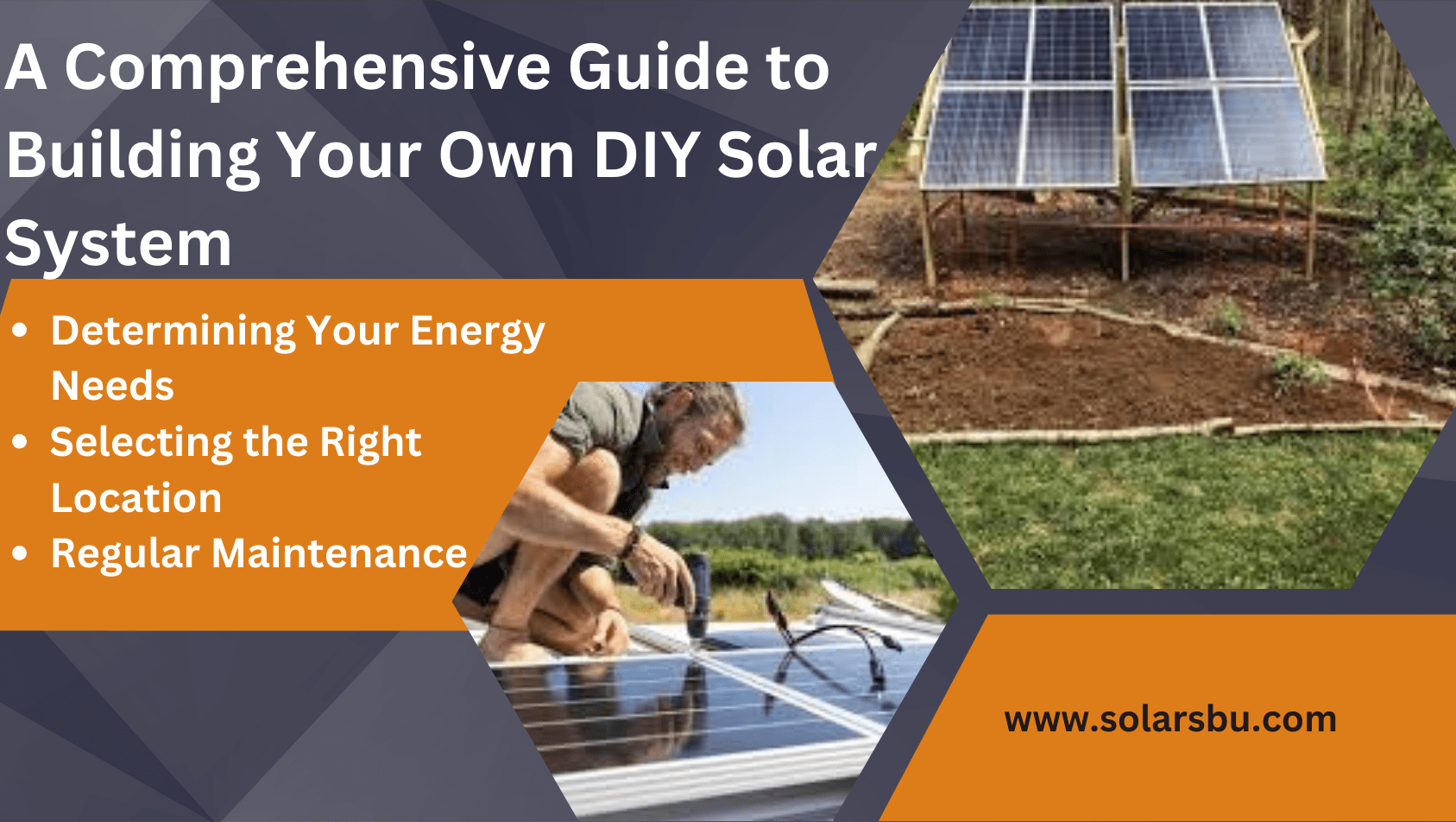A Comprehensive Guide to Building Your Own DIY Solar System
In the realm of sustainable energy solutions, few innovations have captured the world’s attention quite like solar power systems. Harnessing the boundless energy of the sun, these systems offer a clean and renewable source of electricity. However, the thought of setting up a DIY solar system can be daunting for many. Fear not, for in this guide, we will walk you through the process step by step, making it not only manageable but also cost-effective. So, without further ado, let’s embark on this enlightening journey toward building your very own solar power system.
Understanding the Basics
What is a Solar Power System?
A solar power system is an intricate setup that converts sunlight into electrical energy. It comprises solar panels, inverters, batteries, and a range of electrical components, all working together seamlessly to provide your home with clean, sustainable power.
Why Go DIY?
Going the DIY route for your solar power system has numerous advantages. Firstly, it allows you to tailor the system to your specific needs and budget. Secondly, it can save you a substantial amount of money on installation costs. Lastly, it’s an environmentally conscious decision that reduces your carbon footprint.
Planning Your DIY Solar System
Determining Your Energy Needs
Before you begin your DIY solar journey, it’s essential to calculate your energy consumption accurately. This involves assessing your monthly electricity bills and identifying peak usage times. This information will serve as the foundation for sizing your solar power system correctly.
Selecting the Right Location
Solar panels thrive in sunlight, so it’s crucial to position them optimally. Your chosen location should receive ample sunlight throughout the day, ideally facing south for maximum exposure. Factors such as shading and obstructions should be minimized to ensure optimal performance.
The Components of a DIY Solar System
Solar Panels
Solar panels are the heart of any solar power system. These photovoltaic marvels capture sunlight and convert it into electricity. When choosing solar panels, consider their efficiency, warranty, and compatibility with your inverter.
Inverters
Inverters are responsible for converting the direct current (DC) electricity generated by your solar panels into alternating current (AC) electricity, which your home can use. Select an inverter that matches your solar panel capacity and offers features like monitoring and efficiency optimization.
Batteries
Batteries are optional but highly beneficial components for storing excess solar energy. This stored energy can be used during nighttime or cloudy days, ensuring uninterrupted power supply. Popular battery options include lithium-ion and lead-acid batteries.
Installation and Maintenance
DIY Installation
Installing a DIY solar system can be a rewarding experience, but it requires careful attention to detail. Follow your system’s installation manual diligently, and don’t hesitate to seek professional assistance if needed. Ensure all electrical connections are secure, and safety measures are in place.
Regular Maintenance
Proper maintenance is vital to keep your solar system running efficiently. This includes routine cleaning of solar panels, checking for loose connections, and monitoring your system’s performance. Most modern systems come with user-friendly monitoring tools to help you keep track of your energy production.
Financing Your DIY Solar System
Incentives and Rebates
Governments and local authorities often offer incentives and rebates to encourage solar adoption. Research available programs in your area to offset some of the initial costs. Additionally, the federal solar investment tax credit (ITC) can provide significant savings on your solar installation.
Financing Options
If you don’t have the upfront funds for your DIY solar system, don’t worry. There are various financing options available, including solar loans, power purchase agreements (PPAs), and solar leases. These can help you spread the cost over time, making solar energy accessible to more homeowners.
Conclusion
Embarking on the journey to build your DIY solar power system is a commendable step towards energy independence and sustainability. By understanding the basics, carefully planning your system, selecting the right components, and following proper installation and maintenance practices, you can harness the power of the sun to provide clean and renewable energy for your home.
Remember that your DIY solar system is an investment not only in your property but also in a greener future. So, take the plunge, reduce your reliance on traditional energy sources, and embrace the clean energy revolution.

